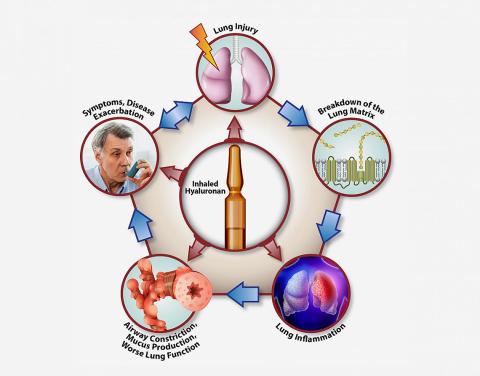New Class of Biologic Found Effective in Treating COPD

Photo: Stavros Garantziotis
NIH researchers found that inhaling unfragmented hyaluronan improves lung function in patients suffering from severe exacerbation of chronic obstructive pulmonary disease (COPD).
Hyaluronan, a sugar secreted by living tissue that acts as a scaffold for cells, is also used in cosmetics as a skin moisturizer and as a nasal spray to moisturize lung airways. Utilized as a treatment, hyaluronan shortened the amount of time COPD patients in intensive care needed breathing support and reduced their number of days in the hospital.
The study, published online in Respiratory Research, is a good example of how examining the effects of environmental pollution on the lungs can lead to viable treatments.
Several years ago, co-senior author Dr. Stavros Garantziotis, medical director of the clinical research unit at NIEHS, showed that exposure to pollution causes hyaluronan in the lungs to break down into smaller fragments, which irritate lung tissue and activate the immune system, leading to constriction and inflammation of the airways. He determined that inhaling healthy, unfragmented hyaluronan reduces inflammation by outcompeting the smaller hyaluronan fragments.
“Inhaled hyaluronan qualifies as a stimulating aid for patients with exacerbated COPD, as it is safe and easy to administer,” said co-senior author Dr. Raffaele Incalzi of Campus Bio-Medico University and Teaching Hospital, Rome. “Furthermore, it acts locally, only in the bronchial tree, and thus cannot interfere with any systemic drug.”
Current treatments for lung disease include inhaled steroids, antibiotics and bronchodilators. Using a molecule already found in the body is a new concept. Garantziotis aims to study this treatment in more patients to understand the optimal conditions and dosing that would produce the most benefit.
